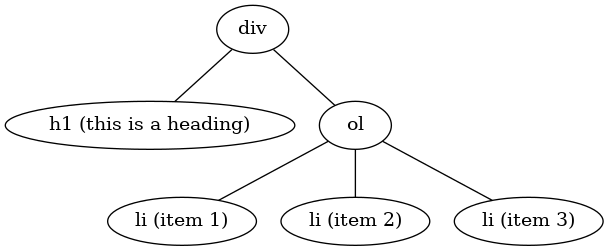When will I need to know this, Data Structures edition
One of the things we're frequently faced with as computer science teachers is the questiosn of "when will I need to know this." This comes up when you teach an non-mainstream language like Racket or a language kids sometimes see as inauthentic like Scratch. It also comes up a lot when learning data structures and algorithms.
Do I really need to know all of these sorts when I'm just going to use the built in sort routine? Do I really have to implement that hash table or linked list when I'll just use the standard library's implementation? You know, once I get past the technical interview for fill-in-the-company I'll never need it again so why are we wasting all this time and energy?
For the most part, these are valid questions to ask.
On the one hand it's hard to really say that a student needs to know all these things, I mean, we all know people with successful careers in tech who know few or one of the these "questionable" topics. On the other hand, it's much easier to explain why one might want to know or even benefit from knowing these "less relevant and directly useful" topics.
Personally, I believe that you shouldn't use a tool that you couldn't build yourself or rather, more realistically, you should understand something of the topics underpinnings. For a hash table for instance, one should understand that the internal storage structure has to be sparse or be otherwise cleverly set up to avoid collisions. Likewise if one understands the differences between an array based structure and dynamically allocated one they can make sensible decisions when they choose between a Java ArrayList and a Java LinkedList.
The other biggie is that if they understand the data structures and algorithms then they have a shot at creating derivative algorithms or building solutions on top of data structures rather than just using standard library implementations.
Of course it's much easier to convince students they might build or use solutions that employ standard data structures and algorithms with real world examples and fortunately we have them.
In my data structures class, we're currently covering Binary Search Trees. At the end I talk a little about next steps - 2-3 trees, red-black trees, B-trees etc. but to be honest students are probably never going to write any of these. On the other hand we have a tree implementation that students interact with on a daily basis and could very well have to work with and manipulate.
The DOM.
For those of you who don't do web development, DOM stands for Document Object Model and is the structure that your web browser uses to store a web page. Web pages are written in HTML - Hyper Text Markup Language which is a specific instance of XML - eXtensible Markup Language. HTML is a hierarchical format and in fact is a textual way of representing a tree.
For example, this HTML example:
<div id="anchor">
<h1> this is a heading </h1>
<ol>
<li>item 1</li>
<li>item 2</li>
<li>item 3</li>
</ol>
</div>
has a div as the root node with two children. the first child is the h1 component (header 1) and the other is the ordered list - ol. the ordered list the has three children, those three li list item elements.

In fact, you can explore this tree through your web browser. You can
right click and explore the page or you can bring up the javascript
console and show that once you get an element with something like d =
document.getElementById("anchor") you explore the tree with things
like d.children or d.firstChild and the like.
This is a pretty concrete example of a tree that CS students could very well be working with and manipulating particularly given how many front end opportunities exist out there.
It turns out there's also a great example out there these days for the linked list. Usually students can see the utility of the linked list and it's ability to insert and delete with a much lower cost than an array but they also see the limitations that result from linear access but where might they need to implement a linked type structure as opposed to just using the built in LinkedList.
Nowadays we don't have to look any further than blockchain. A blockchain literally is a linked list - each node has a reference to it's neighbor. It's a perfect real world example. Of course once you look at this example it's easy to show others since linked constructs are everywhere. The difficulty from the student point of view is they frequently just think of them as "pointer" based structures where the "pointer" is the language construct but it's really just any reference to the "next" item. That reference can be an index into an array for instance and it would still build a linked list.
I think examples like these show students that they may indeed build and or manipulate the data structures and algorithms they study as budding computer scientists and in fact, they might not even realize it. I was talking blockchain a while ago with a number of students and it took quite a while before one said - "hey, this is really just a linked list." I think making that connection explicit and early can be a big help.
So, do you have some real world examples like these that we can use to help motivate our students to really learn some of these subjects that at first glance are only useful to and through the technical interview? If so, please share.